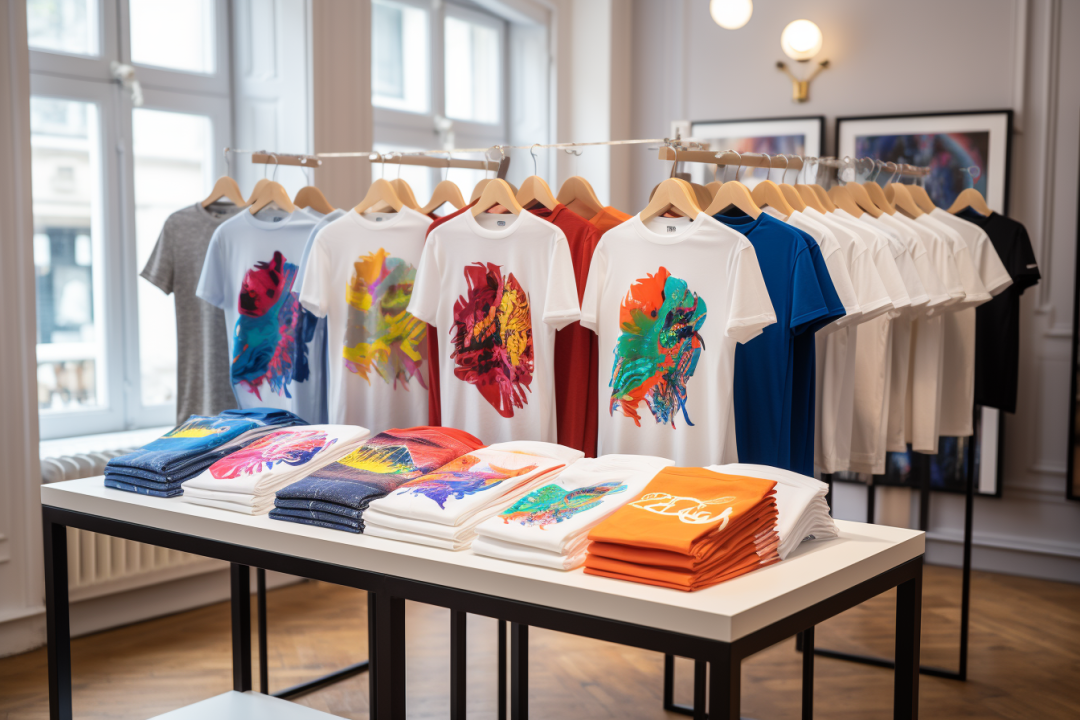A Comprehensive Overview to the Different Types of Fabric Printing Strategies
Starting an exploration of fabric printing methods discloses a fascinating junction of tradition and development. Each method, from the careful workmanship of block printing to the fast performance of display printing, offers one-of-a-kind purposes and offers unique benefits. Digital printing's versatility and ecological consciousness stand in stark contrast to the quick modification of warm transfer printing. Meanwhile, dye sublimation printing astounds with its capability to generate vivid, long-lasting designs on synthetic textiles. To absolutely understand the subtleties and potential applications of these diverse strategies, a much deeper examination is vital.
Block Printing
Block Printing, one of the oldest approaches of fabric decor, has an abundant background that dates back to ancient worlds. Originating in China around 220 A.D., this technique later on spread out to India and ultimately Europe. The process includes carving intricate layouts right into wood blocks, which are then dipped in dye and pressed onto fabric to develop patterns. This approach is significant for its capability to produce highly described and recurring styles.
The accuracy and workmanship involved in block printing make it a labor-intensive procedure, however it likewise permits a high level of personalization. Artisans can develop distinct patterns by incorporating different blocks or varying the application of color. This flexibility has actually added to the long-lasting popularity of block printing in both traditional and modern textile layout.
Block printing is especially valued for its visual high qualities, consisting of the minor variations in pattern and shade that arise from the hand-printing process. These imperfections provide a distinct personality to every item, differentiating it from mass-produced fabrics. Regardless of advancements in modern printing modern technologies, obstruct printing remains a valued method, commemorated for its historical relevance and creative value.
Screen Printing
Display printing, an additional prominent textile decoration strategy, has reinvented the market with its efficiency and flexibility. This approach entails producing a pattern, called a display, and using it to apply layers of ink on the printing surface. Each color in the style needs a different screen, which allows for lively and complex multi-colored prints.

Among the essential advantages of screen printing is its versatility to various kinds of textiles, consisting of cotton, polyester, and blends. This strategy is especially ideal for large-volume orders because of its cost-effectiveness and rate. The sturdiness of the prints is one more considerable advantage, as the ink bonds well with the material, making certain long-lasting layouts that stand up to multiple cleans.
When dried out, the layout is transferred onto the emulsion-coated screen utilizing a UV light resource. Ink is then pushed via the pattern onto the textile using a squeegee.
Screen printing is extensively used in the apparel industry, promotional items, and custom clothing. Its capacity for top quality, in-depth prints safeguards its condition as a cornerstone technique in fabric printing.
Digital Printing
Digital printing has actually swiftly emerged as a sophisticated method in the fabric market, leveraging advanced modern technology to produce high-resolution styles straight onto textile. Unlike traditional approaches, digital printing employs inkjet printers to down payment pigment or dye-based inks onto fabrics, enabling vibrant and elaborate patterns with a remarkable level of information and see shade precision.
Among the main benefits of digital printing is its versatility. This method enables on-demand printing, which considerably reduces waste and reduces stock expenses. Furthermore, it supports brief runs and personalized designs, making it perfect for custom jobs and limited-edition collections. The removal of displays and various other arrangement demands better boosts performance, decreasing production time and labor costs.
Additionally, electronic printing is environmentally pleasant. sublimation printing. It utilizes water-based inks and needs much less water and energy contrasted to conventional methods, lining up with sustainable practices. The accuracy of digital printing also allows making use of a broader series of materials, including cotton, silk, polyester, and blends, ensuring convenience throughout numerous applications
Warmth Transfer Printing
How does warm transfer printing reinvent material style? This approach has brought considerable improvements by permitting elaborate and vibrant layouts to be transferred onto a range of textiles with impressive precision. Warmth transfer printing includes utilizing heat and pressure to move a design from a particularly formulated paper onto material. This procedure starts with publishing the preferred image onto transfer paper making use of specialized inks. Once the photo is printed, the paper is put onto the fabric and subjected to a warmth press, which moves the ink from the paper to the material.
Among the key benefits of warmth transfer printing is its ability to create top notch, in-depth photos swiftly and efficiently. It is especially well-suited for little production runs and custom-made orders, making it a popular choice for tailored clothing and advertising products. Furthermore, this method is versatile, suiting numerous kinds of materials including cotton, polyester, and blends.
Moreover, warmth transfer printing is reasonably affordable compared to other approaches, as it needs marginal setup and reduced initial investment - Branded clothing. This affordability, combined with its ability for creating dynamic, durable prints, highlights its essential function in modern material style

Dye Sublimation Printing
Dye sublimation printing, an innovative material resource printing method, provides unmatched vibrancy and long life for designs on different artificial materials. This approach involves transforming strong color into a gas without travelling through a liquid state, enabling the dye to penetrate the fabric seamlessly. The process begins with printing the style onto a special transfer paper utilizing sublimation inks. The published transfer paper is after that put on the material, and both go through high warmth and pressure making use of a warmth press. The warmth causes the dye to sublimate and bond with the textile fibers, producing a permanent, high-resolution print that withstands fading and breaking.
One of the essential advantages of color sublimation printing is its capability to produce continuous-tone prints with vibrant colors and complex information. Unlike other printing methods, the color enters into the textile instead of sitting on top of it, resulting in a soft and breathable finish. This strategy is special info specifically reliable on polyester and other artificial products, making it a prominent choice for sportswear, banners, and home textiles. Additionally, color sublimation is eco-friendly, as it requires no water and produces marginal waste, straightening with lasting manufacturing methods.
Final Thought
In summary, towel printing methods each offer one-of-a-kind benefits tailored to different demands and applications. Block printing is revered for its artisanal top quality, while display printing is helpful for high-volume production. Digital printing offers convenience and environmental benefits, whereas warmth transfer printing is perfect for fast modification. Dye sublimation printing produces vivid, long lasting designs on synthetic materials. The variety and development within these methods highlight the vibrant and advancing nature of the towel printing industry.
Each method, from the careful workmanship of block printing to the quick effectiveness of screen printing, offers one-of-a-kind objectives and offers distinctive benefits. Digital printing's versatility and ecological awareness stand in plain contrast to the swift personalization of warmth transfer printing. Despite developments in contemporary printing technologies, block printing remains a cherished method, commemorated for its historical significance and imaginative value.
Dye sublimation printing, an innovative textile printing method, offers unequaled vibrancy and long life for designs on numerous synthetic textiles. Digital printing supplies versatility and environmental advantages, whereas heat transfer printing is perfect for quick modification.